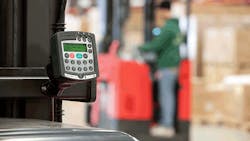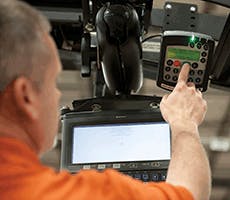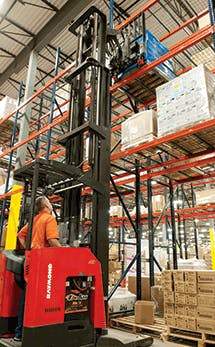A Better Way to Manage Your Fleet
Famed business management consultant Peter Drucker once said, "What gets measured gets managed." Facility managers know all too well that without measurements of critical metrics, it's hard to see where improvements need to be made, let alone make them. Without insight, operations cannot perform to their optimum levels.
In this era of Big Data and the Internet of Things, facilities management requires measuring more than a flat number of dollars per hour times the number of hours worked on a task. The definition has expanded to include all costs associated with specific tasks and how much it costs to service a customer or run an operation. The evolution of data collection and reporting has made the analyses of these factors possible. In fact, some facility managers are finding innovative ways to combine data from their labor and equipment to evaluate functions within their facility and assess the impact on profitability. Specifically, some facility managers have experienced operational visibility with the integration of data from a lift truck fleet management system and a labor management system (LMS).
Fleet management systems allow facility managers to acquire, analyze and act upon information about their lift truck fleet operations, which in turn enables them to control and reduce costs related to lift truck fleets. When information from a fleet management system is combined with an LMS—which collects worker data, such as inventory handled, equipment used and paths traveled—the results can help increase operational visibility and improve operations related to material flow and labor utilization within the facility.
Impacting the Bottom Line
Since labor and equipment are the primary controllable cost drivers in most facilities, many facility managers are seeking improved ways to manage these factors. Integrating data from an LMS and a lift truck fleet management system into one report creates cost and task visibility, which in turn leads to smarter decision-making about labor and equipment—opening new doors to drive profitability.
Analyzing specific costs related to labor and equipment through an integrated data portal can help facility managers identify cost drivers by facility, department, process and category through usable reports. Meeting a budget is often one of a facility manager's main challenges, but without integrated labor and lift truck data as provided by reports, he or she might not know until the end of the month whether numbers are met, which can be too late to implement meaningful changes. Daily visibility allows time to make changes, which can increase profit.
Reviewing integrated data also allows for an analysis of indirect costs and employee productivity from a volume-adjusted basis. This can help facility managers determine the budget drivers in terms of productivity and equipment utilization. In particular, this provides information about employee impact. For instance, a facility manager can track individual performance against projected budget for each function, providing an opportunity to evaluate potential improvements and make changes before the month is over.
Thinking Beyond Labor Costs
Facility managers are responsible for the effective operation of facilities that contain complex products and systems. In many cases, worker and equipment productivity—not the cost of equipment—is their primary challenge. To analyze worker and equipment productivity, facility managers often start by focusing on labor costs. In reality, labor costs are only one piece of the puzzle.
In fact, managers also should consider how to best use labor and equipment more efficiently. Activity-based costing (ABC) is a strategic way to analyze costs associated with various tasks throughout a facility. It assigns costs based on relative activities performed, and it focuses on actual costs, not averages. For example, information about the cost associated with performing putaway tasks allows facility managers to make informed decisions on trailer placement and slotting.
With the evaluation of integrated data from equipment and labor, facility managers are able to increase productivity by pinpointing inefficiencies of employees, material flow or equipment use. Even a small increase in labor productivity, such as 5% to 10%, can have a significant impact on costs.
Eliminating Avoidable Costs
Material handling equipment is an important investment for facility managers, so it's critical that these pieces function at their maximum potential and additional costs, such as maintenance, remain relatively low. Tapping into potential maintenance savings can prove to be challenging at times, especially as many facility managers are unaware that 30% to 40% of maintenance costs are avoidable with the right monitoring equipment.
Partnering with a consultant can help managers make sense of this data. For example, facility managers can make improvements related to equipment use and maintenance practices using lift truck data such as battery functions, impact issues and fleet health.
Lift truck data also enables the evaluation of ongoing maintenance expenses for each lift truck. Once an older truck has maintenance costs that exceed its usefulness, it becomes more cost-effective to invest in a new truck. And by identifying preventive maintenance versus repair costs, facility managers can make better decisions about the optimum replacement schedule.
Ensuring Efficient Equipment Utilization
Many facility managers are most concerned about the cost of equipment when managing operations budgets. However, what they might not know is that the majority of the average equipment costs—approximately 72%—goes toward labor. Integrated data can help facility managers determine how productive the operator is and whether the operator is using the correct equipment for the assigned task.
For example, data can provide visibility into productive versus nonproductive tasks. Consider the tasks a worker does throughout the day. If an operator is spending 25% of their time on indirect tasks—such as cleaning, training and attending meetings—they might not be enhancing the company's bottom line, depending on the operation. Facility managers should consider how much time operators use lift trucks, how long lift trucks are on and how long lift trucks are idle. This data can be compared with LMS data to show how productive an operator is per individual task. Many times, facility managers will discover that even though a LMS reports 100% performance and utilization for a worker, they may utilize the equipment less than 50% of the time. Such information is critical to identify opportunities for process improvement.
In addition, this data can help determine whether a lift truck is being used for the wrong job. Data might reveal that a reach truck is being used primarily for long horizontal transport, putting unnecessary wear on that truck. In that instance, a company can allocate a more appropriate lift truck in its place and use the reach truck for vertical applications for which it was designed.
The Benefits of Managing What's Measured
When visibility of equipment use and labor are integrated with cost and budgeting information, facility managers can address challenges from not only a tactical perspective but also a strategic perspective.
Detailed information can be tied to strategic goals three to five years out. Consider the cost to pick a full case or a full pallet, costs from one shift to another, costs specific to third-party logistics (3PLs), or the cost to serve one customer versus another. Knowing this can help facility managers understand how much labor and how many pieces of equipment are needed at any given time to keep their facility running productively.
Total visibility of operations puts facility managers in a position to make timely and meaningful decisions, whether it is on cost reduction, service improvement, or product availability. In other words, it gives managers the opportunity to effectively manage what gets measured—allowing them to make smart, real-time decisions that improve not only their facilities but also their company's bottom lines. As Big Data and the Internet of Things continue to evolve, it is important for facility managers to understand the benefits of data and the positive impact that an integrated approach can provide.
Alan Marder is director of technology solutions, and Melinda Laake is manager of enterprise solutions with The Raymond Corporation (www.raymond.com), a provider of material handling technology, expertise and support to increase productivity and cost-efficiency.
Sources
"Buy, Sell, or Hold?" AllBusiness.com. AllBusiness, 2006. Web. 6 Dec. 2010. Tanel, Tom. "Achieving Warehouse Success." Cattan Services Group, WERC. Feb. 2008. Seminar.


